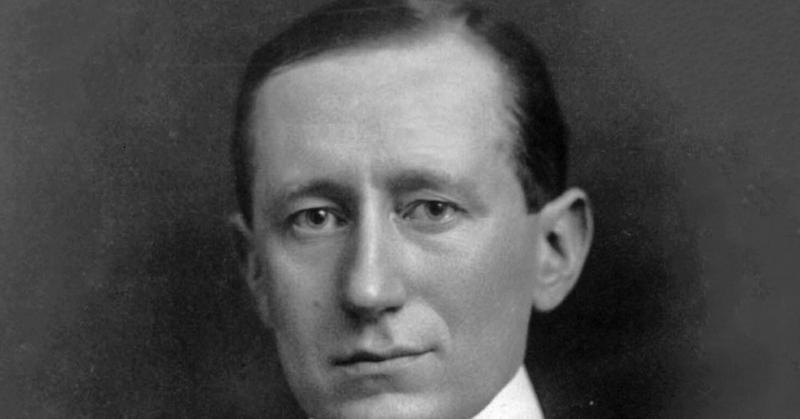Invention of the Radio: Guglielmo Marconi's Genius And His Brushes With Death
By | October 27, 2020

Born in 1874 in Bologna, Italy, Guglielmo Marconi was the great-grandson of the founder of Jameson's Irish Whiskey. His father's side of the family was incredibly wealthy, so he grew up learning from the finest tutors before traveling to study at the the Livorno Technical Institute and the University of Bologna.
When he was only 20 years old, Marconi began investigating the so-called "invisible waves" discovered by German physicist Heinrich Rudolf Hertz. To convince his mother that he was serious about radio technology after he returned to his family's estate in Italy, he created a radio transmitter and receiver setup that rang a small bell when he pressed a button on a bench in the home.
His family was supportive enough to push him to keep working and even provided him with a lab that allowed him to build out his experiments. He ended up transmitting waves up to half a mile away, which was then considered the maximum transmission distance. He constructed a more impressive version of his wave-generating machine in an attempt to find government contracts for his experiments, but when that didn't work out, he went elsewhere.

Marconi In England
After the Italian government failed to show any interest in his work, Marconi and his mother traveled to England in 1896, where they were pretty much stars from their arrival. One of Marconi's biggest supporters was the British Post Office, who set the inventor up with enough funds to create a machine that increased the broadcasting range up to 12 miles. Shortly afterward, he constructed a wireless station that allowed Queen Victoria to send messages to Prince Edward whenever he was on the royal yacht, which was technologically marvelous but must have been annoying for the prince.
Demonstrations in the United States were even more impressive. In Sandy Hook, New Jersey, Marconi covered the America's Cup international yacht races for the New York Herald in fall 1899. Following the impressive demonstration, Marconi and his team installed wireless equipment aboard the American Line's S.S. Saint Paul, making it the first ocean liner to report its arrival in Great Britain by wireless from 66 nautical miles off the English coast.

Radio Waves
At the turn of the 20th century, scientists were torn over whether or not radio waves moved in straight lines or with the curvature of the Earth. Marconi believed they followed the planet’s curvature even though he didn't really have any evidence to back up his hypothesis, but he wasn't the type of person to stop working just because someone told him that he was wrong.
To prove his theory, Marconi broadcast a radio wave 2,209 miles from Poldhu, Cornwall to Newfoundland. On December 12, 1901, Marconi's crew in Cornwall cranked their equipment to full power, sending out foot-long sparks as well as a simple message: the letter "S." The transmission brought Marconi worldwide fame, even if he wasn't entirely sure how waves worked.
By 1904, he established a commercial operation that transmitted nightly news reports to ships who subscribed to the service. Unfortunately, it wasn't a huge hit at the time. Ironically, Marconi was completely wrong about the way radio waves travel. They do actually move in straight lines, but when they bounce off the Earth's ionosphere, it mimics the curvature of the Earth.

Dodging Fate
Fewer than 10 years after his monumental transatlantic radio signal test, Marconi was awarded the Nobel Prize in Physics, an honor he shared with German physicist Karl F. Braun, the inventor of the cathode ray tube. This award made Marconi a household name. He began selling Marconi Company Radios operated by "Marconi Men" to shipping companies to send distress signals, navigation reports, and on-ship communication.
Three years after his win, Marconi was invited to travel on the inaugural voyage of the Titanic, which used his radios. He really wanted to see how they worked, but unfortunately, he had work to do. He opted instead to take the Lusitania three days before the Titanic's doomed voyage.
Following the sinking of the Titanic on April 15, 1912, Britain's postmaster-general explained that the survivors had Marconi to thank for their lives. "Those who have been saved, have been saved through one man, Mr. Marconi," he said, "and his marvelous invention." In a strange turn of events, the Lusitania sank three years later after it was attacked by a German U-boat.

Marconi And Mussolini
Marconi's success in England and America finally forced Italy to take notice decades after they turned their noses up at his work. By the 1920s, he was lauded as an Italian genius, and after he joined the Italian Fascist Party, Benito Mussolini made him the President of the Royal Academy of Italy. Mussolini and Marconi were so close that it was rumored Mussolini was the best man at his second wedding, but in reality, Mussolini had to send his regrets on account of all the dictating he had to do.
Even while acting as the head of R.A.I., Marconi continued his experiments, but he suffered nine heart attacks in three years while working on microwave technology. He passed away on July 20, 1937. The country closed down for his funeral, and at 6:00 P.M., all B.B.C. and wireless post office transmitters in the British Isles observed two minutes of silence for the father of modern radio.

